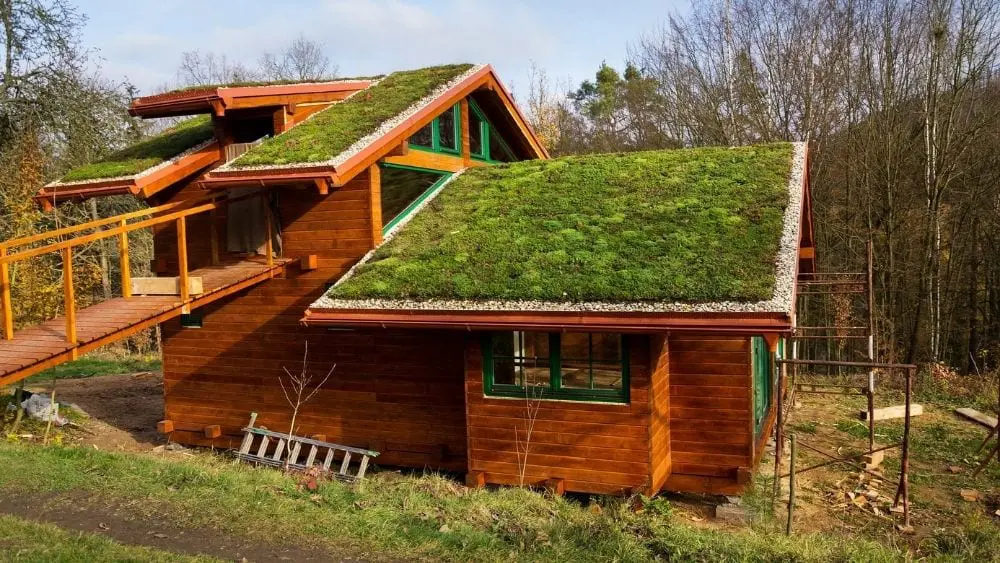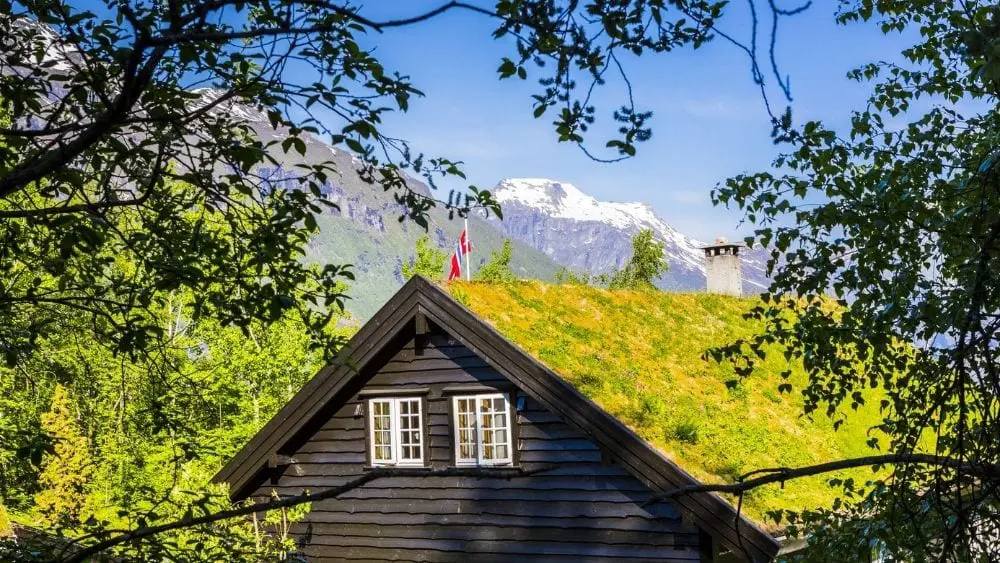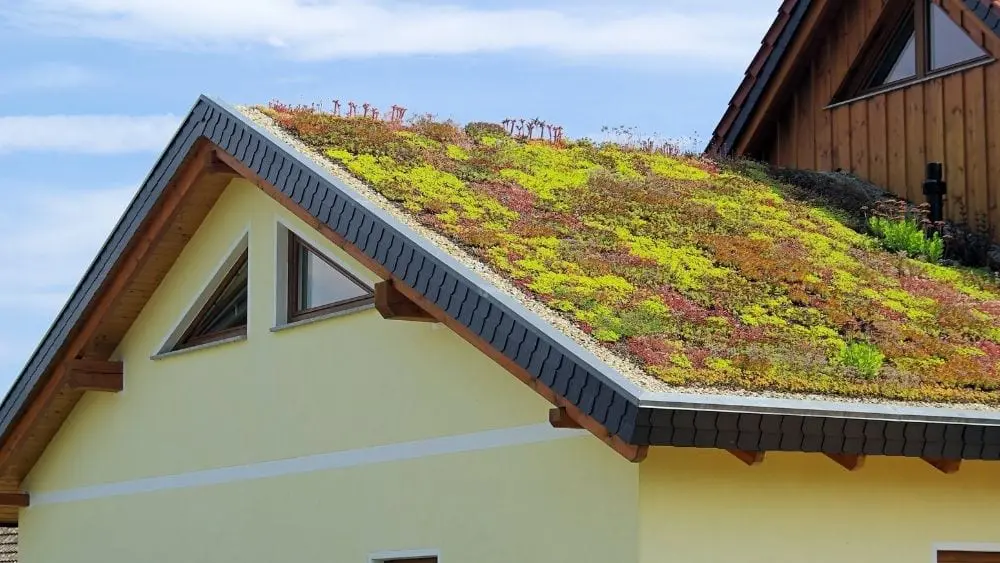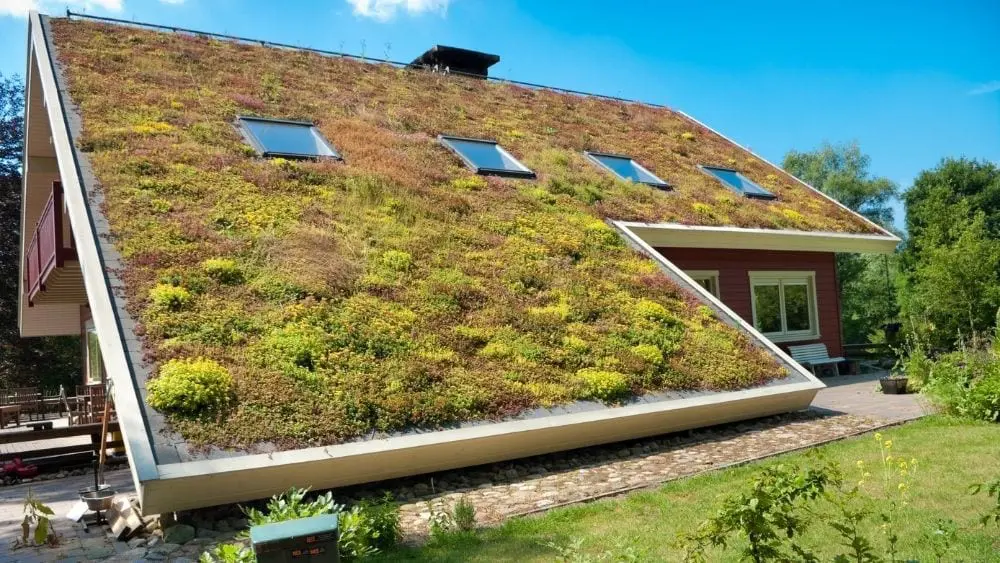
Herbs, grass, flowers and even vegetables. If you’re a homeowner with a blossoming home garden, have you thought of converting it into a green roof?
As homeowners shift to eco-friendly designs, they are realizing the space on the top of homes, sheds and storage areas are up for grabs; they envision these patches of real estate as places that can be transformed into green roofs. They blanket these green roofs with plants, grass, and vegetation, which adds aesthetic appeal to the home while being energy efficient and environmentally friendly. Homeowners with a green thumb can opt for a variety of herbs, flowers, fruits, and vegetables, while those who prefer a low-maintenance approach can stick to grass, moss, shrubs, or succulents.
If you’re thinking of setting up a green roof for your home, here’s everything you need to know to get started.
Pros and Cons of Green Roofs

Green roofs come with many perks, from providing natural insulation and shade to increasing the lifespan of your roof. The attractive scenery adds a unique touch and some curb appeal to your home. Let’s take a look at some of the pros of green roofs:
- Natural insulation. You may put a dent in your utility bills with your new green roof by enhancing your home’s insulation. In summertime, the plants and shrubs will consume the heat that you’d normally feel on the top floor of your house or in the attic. And in the winter, the extra layer of protection will help seal in heat.
- Noise reduction. Your green roof doesn’t just provide insulation, it also provides noise cancelling benefits – a great plus if you live in a busy urban area. While your green roof won’t make your home soundproof, it’ll absorb more of the outdoor noise than a regular roof.
- Produce at your fingers. Working with a blank slate, you can fill your green roof with herbs, fruits, vegetables, and flowers, making a great harvest for your kitchen table. Leafy greens like arugula, spinach and lettuce tend to be the easiest crops for beginners. Thyme, oregano, and chamomile are also resistant to drought, so they’d be a great fit for a summertime roof garden.
- Enhanced air quality. The layer of greenery on your rooftop garden will absorb the pollution and carbon dioxide around the home, improving the environment.
- Extra layer of protection. You can extend the lifespan of your roof with a roof garden as it protects the base from the elements, including wind, rain, ultraviolet light and extreme temperatures. Some experts suggest that green roofs can double or even triple the life expectancy of your rooftop.
On the flipside, homeowners need to be aware of the drawbacks of green roofs. They include:
- The cost. Green roofs don’t come cheap. You’ll need the initial investment of buying the foundation, soil, wood framing or pebbles to keep your greenery in place, and a variety of plants. Ultimately, this could be an expense in the thousands of dollars, depending on the size of your roof.
- Modifications to your roof. You also need to consider the extra support required so your roof can handle the increased weight load and make renovations accordingly. As a rule of thumb, a green roof easily adds about 300 to 400 pounds to an existing rooftop, and some roofs need to be retrofitted to support the extra weight.
- Regular maintenance. Just like your regular garden, your green roof may require daily maintenance, like watering the plants, keeping pests away, and removing weeds. Make sure you have enough time and patience to commit to the type of green roof you’re designing.
Two Types of Green Roofs

Homeowners dreaming of a green roof have two types to choose from: an intensive green roof or an extensive green roof. Here’s how they differ:
- Intensive. Intensive green roofs are also called roof gardens. Think of the rooftop patios that double as a recreational space for hosting or providing a small, quiet respite for the family. They can include trees, shrubs, grass, and other landscaping. You can even use the green roof to grow a vegetable garden. Note: these don’t work with sloped roofs. Regular maintenance is required with intensive green roofs to keep the garden manicured.
- Extensive. Extensive green roofs, on the other hand, are suitable for pitched roofs. Think of the homes with roofs covered in greenery, from wildflowers and varying shades of green grass to a mix of moss and succulents and vines beautifully coating the space. These green roofs require far less maintenance and are self-sustaining – you can even count on the rainfall to keep the green roof watered. They’re not typically designed to handle foot traffic – unless you’re doing maintenance or inspection work.
Homeowners can decide on which green roof option works best by taking stock of the space on the roof, garden shed and storage capacity. Keep in mind, green roofs are also a great option if you live in an apartment or townhouse and don’t have a yard in which to grow a traditional garden.
Climate Considerations for Green Roofs

Turns out, you can establish a green roof in most climates, which is great news for homeowners in states with chillier weather. If you live in a cooler climate, you’ll need to zero in on plants that can flourish in those temperatures. Succulents and moss are great options and grow well with less sun exposure.
Homeowners need to ensure their roof gardens have access to enough sunlight, water, and drainage to keep their plants healthy. You’ll need to examine your home’s geographical position, taking note of when the roof receives sun and shade throughout the day. In a nutshell, you need to find the sweet spot on your roof that catches the most sunlight for your roof garden.
Your roof’s height is another factor to consider: you don’t want the wind to blow dirt and foliage away. Most homeowners use pebbles or wood framing to help keep their gardens intact. Green roofs should only be installed on roofs pitched at an incline of up to 45 degrees. If the incline is 35 degrees or more, you’ll need a specialist to help keep the layers of your roof garden in place.
Price Estimates for a Green Roof
The cost of your green roof will depend on the type you select and your desired plants. The price point can vary from $50 for a roof lined with grass and golden moss to over $200 for a carefully manicured roof.

Carmen Chai is an award-winning Canadian journalist who has lived and reported from major cities such as Vancouver, Toronto, London and Paris. For NewHomeSource, Carmen covers a variety of topics, including insurance, mortgages, and more.
 Slate Roofs: Everything You Need to Know
Slate Roofs: Everything You Need to Know